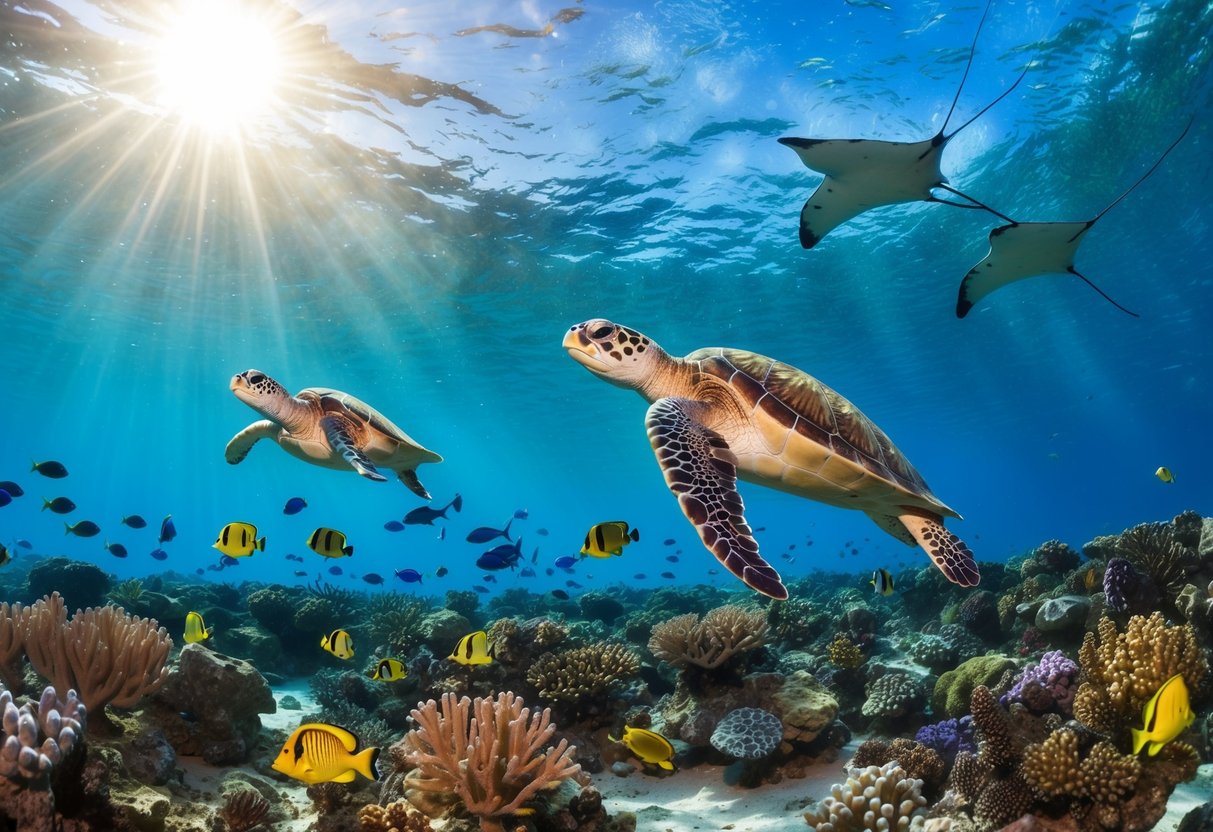
Best Practices for Underwater Adventures
Exploring the underwater world in Belize offers vibrant marine life and stunning scenery. Trying underwater photography and mastering buoyancy control can enhance the experience and capture memorable moments.
Underwater Photography Tips
Capturing the beauty beneath the waves requires an understanding of unique light conditions. Using an underwater camera designed to handle low light and water resistance is essential. He or she should consider shooting at shallow depths where natural light is more abundant, enhancing the vibrant colors of the coral and fish.
Maintaining a steady position is crucial to avoid blurring. This is where buoyancy control plays a role, helping the photographer remain still without disturbing marine life. Additionally, it’s vital to approach subjects at their eye level and at a safe distance. This perspective often results in more engaging images while respecting the natural environment.
Selecting the right lens is also important. Wide-angle lenses are preferred for capturing larger scenes or schools of fish, whereas macro lenses work well for close-ups of smaller creatures. In post-processing, minor adjustments to contrast and brightness may bring underwater photographs to life.
Buoyancy Control Essentials
Buoyancy control is a fundamental skill for any avid diver. Proper buoyancy control ensures a positive underwater adventure and minimizes harm to delicate ecosystems. Wearing the right amount of weight is the first step, as it assists in efficient movement through the water without unnecessary energy expenditure.
The diver should learn to control their breathing patterns. Slow and deep breaths help in maintaining consistent buoyancy levels and conserve air supply, which extends dive times. Mastering this technique fosters a stable and relaxed experience beneath the surface.
Fine-tuning buoyancy with small adjustments to the BCD (Buoyancy Control Device) further aids balance. Practice hovering in place without touching the seabed, ensuring no contact with marine creatures. This not only protects the environment but also enhances the diver’s ability to enjoy the underwater sights fully.
Travel Tips for the Belizean Isles
Traveling to the Belizean Isles provides options for both bustling and tranquil experiences. Choosing between the lively atmosphere of Ambergris Caye with its vibrant hub, San Pedro, and the laid-back charm of Caye Caulker shapes one’s experience. Planning transportation and accommodation efficiently enhances the journey.
Choosing Your Base: Ambergris Caye vs Caye Caulker
Ambergris Caye, the largest island, is popular for those seeking a blend of relaxation and activity. San Pedro, its main town, offers numerous dining, shopping, and nightlife options. The island’s beautiful beaches and access to the Belize Barrier Reef make it ideal for divers and snorkelers.
In contrast, Caye Caulker presents a more relaxed vibe with its slogan, “Go Slow.” The island encourages unwinding by the beach and enjoying quiet evenings. Despite being smaller, it offers plenty for adventure-seekers, from snorkeling to kitesurfing. Both locations have unique features, making it important to consider what type of experience is desired before deciding.
Transportation and Accommodation
Travel between the islands and the mainland is facilitated by water taxis and small aircraft, offering flexibility and scenic views. Water taxis are frequent and affordable, connecting places like Ambergris Caye, Caye Caulker, and Long Caye.
In terms of accommodation, Ambergris Caye provides a range of options from luxury resorts to budget-friendly hotels. Caye Caulker, known for its affordability, offers charming guesthouses and hostels. Each island has its own distinct appeal, so exploring the available options can lead to the perfect fit for travelers’ preferences.